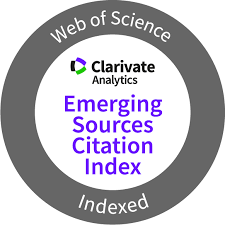In defense of extreme database-centric architecture
DOI:
https://doi.org/10.36561/ING.24.9Keywords:
RDBMS, Web Application Architecture, Database-Centric ArchitecturesAbstract
A famous aphorism in computer science goes: "All problems in computer science can be solved by another level of indirection", often expanded by the humorous clause "except for the problem of too many levels of indirection". After 30 years of applying the first aphorism, multi-tier architectures (i.e. architectures with many levels of indirection) have become the de facto standard for web applications, leaving little room for alternative architectures. But in the industry, there is a product to develop and run web applications that follows a different architecture, centered on the RDBMS to the extreme of not needing any other component to function. There are not many papers in academia that addresses RDBMS-centric architectures in general, and this extreme architecture in particular has not been considered. In recent works I have analyzed the case of an extreme database-centric architecture, which I have called RDBMS-only architecture. This article defends the relevance and analyzes opportunity cases of this approach.
Downloads
References
Vicente, A., Etcheverry, L. and Sabiguero, A; An RDBMS-only architecture for web applications, 2021 XLVII Latin American Computing Conference (CLEI). IEEE, 2021. DOI: https://doi.org/10.1109/CLEI53233.2021.9640017
Vicente, A; La arquitectura RDBMS-only: una arquitectura database-centric para aplicaciones Web, Tesis de maestría. Universidad de la República (Uruguay). Facultad de Ingeniería, 2021. [Online]. Available: https://hdl.handle.net/20.500.12008/31620
Scourias, J; Aspects of client/server database systems, University of Waterloo, 1995.
Koppelaars, T; A Database-Centric Approach to J2EE Application Development, Oracle Development Tools Users Group (ODTUG), 2004.
Greenspun, P; Database Backed Web Sites: The Thinking Person’s Guide to Web Publishing. Ziff-Davis Publishing Co., 1997.
Ceruzzi, P; Computing: a concise history, MIT press, 2012. DOI: https://doi.org/10.7551/mitpress/9426.001.0001
T. A. S. Foundation; Rfc 3875 - the common gateway interface (cgi) version 1.1, 2004. [Online]. Available: https://tools.ietf.org/html/rfc3875
Nielsen, J; Noncommand user interfaces, Communications of the ACM, vol. 36, no. 4, pp. 83–99, 1993. DOI: https://doi.org/10.1145/255950.153582
Kim, W; Object-Oriented Database Systems: Promises, Reality, and Future, in VLDB, vol. 19, 1993, pp. 676–692
Cimolini, P; Oracle Application Express by Design: Managing Cost, Schedule, and Quality. Apress, 2017. DOI: https://doi.org/10.1007/978-1-4842-2427-4
Llewellyn, B; NoPlsql versus ThickDB, 2016. [Online]. Available: https://web.archive.org/web/20170909164923/https://blogs.oracle.com/plsql-and-ebr/noplsql-versus-thickdb
Kuhn, T; The structure of scientific revolutions. University of Chicago press, 2012. DOI: https://doi.org/10.7208/chicago/9780226458144.001.0001
Lakatos, I; Falsification and the methodology of scientific research programmes, in Lakatos I. and Musgrave A. Criticism and the growth of knowledge, Cambridge University Press, 1970 DOI: https://doi.org/10.1017/CBO9781139171434.009
Lakatos, I; History of science and its rational reconstructions, PSA: Proceedings of the biennial meeting of the philosophy of science association. Vol. 1970. D. Reidel Publishing, 1970. DOI: https://doi.org/10.1086/psaprocbienmeetp.1970.495757
Published
How to Cite
Issue
Section
License
Copyright (c) 2023 Alfonso Vicente

This work is licensed under a Creative Commons Attribution 4.0 International License.






















